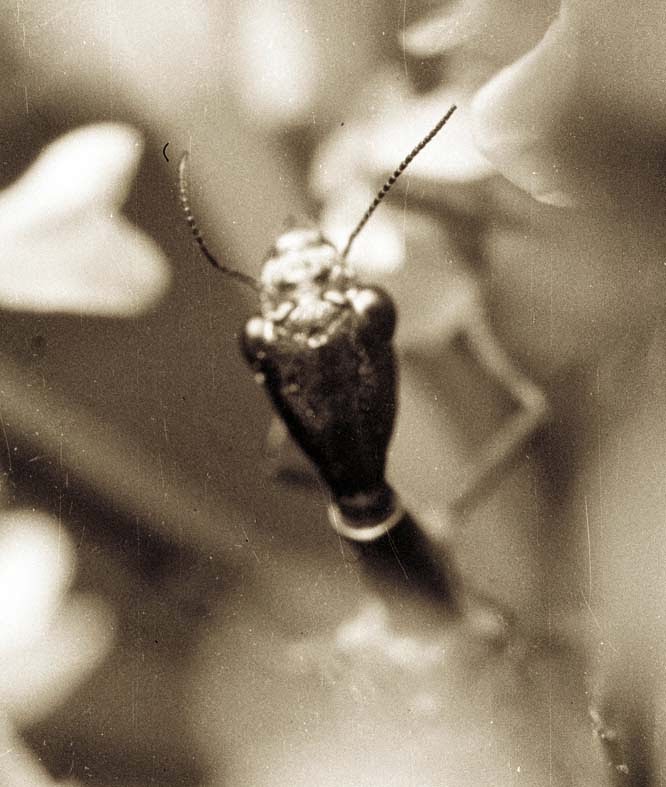Back in 1974, when I worked in a research station at Wellesbourne in Warwickshire, I used to take a regular lunchtime walk along the footpath across the farm. One day I spotted this extraordinary insect - a snakefly Raphidia notata - on a cow parsley umbel.
In those days I had a very basic camera and could only afford black and white film, but I managed to take some photographs. Yesterday I found the negatives (that I'd never printed) 40 years after I took them.
This is the only time I've ever found this rather uncommon insect. I've been looking for another for 40 years, with no luck, but still hope that one might wander into my field of view, so that I can photograph it in colour with better equipment.
Snakeflies belong to the insect order Neuroptera, which also includes alder flies and lacewing flies, and their distinctive feature is that extraordinary elongated neck.
This specimen was a female. That long, curved ovipositor is used for laying eggs in the bark crevices of oak trees.
Snakeflies are predators, feeding on other, smaller insects. I was able to watch this one hunting aphids in a cow parsley umbel.
That long neck is useful for reaching forward through narrow gaps to reach prey, like .....
... this aphid that it has impaled in its jaws.
Click here for more information about snake flies









































































